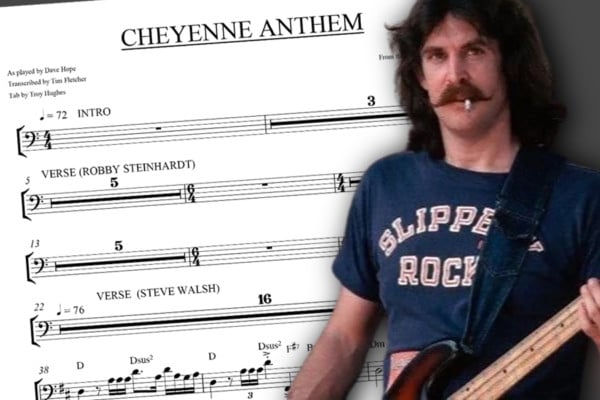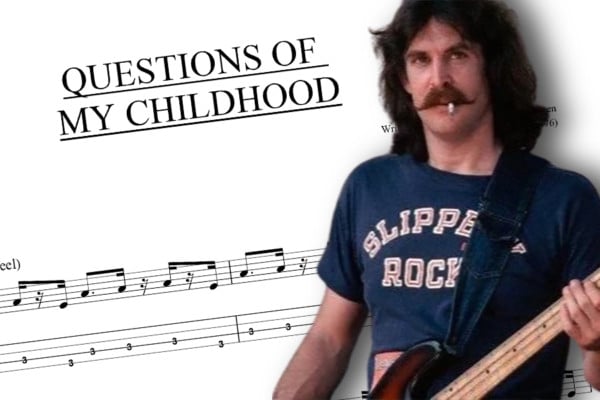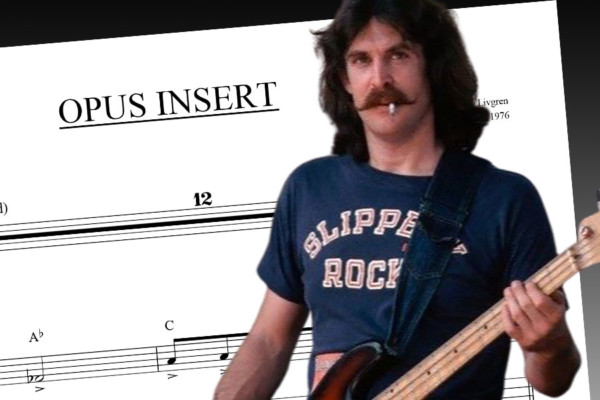Bass Transcription: Dee Murray’s Bass Line on Elton John’s “Amoreena”
“Amoreena” was Dee Murray’s first recording collaboration with Elton John, and from analyzing the transcription of his playing on this tune, it’s not hard to see why John and Murray had such a prolific career working together. Many different bassline approaches are employed to great affect in this song. The form of the bassline as a whole also demonstrates good forethought and a measured trajectory for what Murray plays, why, and when.
The first cycle of the form when the bass enters (pre-chorus – verse – pre-chorus – chorus) is fairly straightforward. In the pre-choruses, the bass is more legato and keeps the descending chromatic motion from D to C with some arpeggiation for character, as opposed to the 1st verse which is played mostly on the beat with some scalar movement to connect the changes. It’s interesting to see how these simple ideas get flipped on their head in the second repetition of the form.
One of the most impressive things about the 2nd Verse section is how the rhythmic syncopation of the mostly scalar and arpeggio-based bassline plays against John’s comping. None of Murray’s note choices here are that surprising, it’s the displaced rhythm of it that makes it so intriguing and somewhat canon-like in how the bassline is playing a half beat in front or behind the chord changes. This leaves the impression that something is being chased after or played with just as young lovers might. He later expands upon this in Verse 3 with some upper-register flourishes but still keeps that same, tight, syncopated feel.
The 2nd pre-chorus is also upgraded with more rhythmic character and arpeggiation than the 1st pre-chorus. It features a blue-note trill to add a different flavor into the mix while still maintaining the descending chromatic motion in the bassline.
The chorus of this song provides a textural contrast to the verse and pre-chorus sections. Murray here performs a measured trill that compliments the textural impression of the keyboard. This is an elongated, static gesture that effectively contrasts the tight rhythmic playing we’re used to hearing in the verses.
The 3rd verse is still very rhythmic but here the bass begins to fight against the rhythm, and break out into some longer notes and melodic flourishes (89-90). This eventually fully ramps up into the chromatic climb and glissando that always segues into the pre-choruses (96-97).
Pre-choruses 3 & 4 establish the bass unlocking from a supportive harmonic role, and stretching into long, melodic phrases (102-103, 118-119) as well as fluid, scalar passages (104-105, 120-121). These examples mark the zenith of the bass breaking free of its humble roots and stepping to the forefront of the rhythm section. Murray later returns to the simple rhythmic ideas he employed in the earlier verses to bring the song full circle after the multi-measure rests in the last verse.
The trajectory and unfolding of the bass part shows much sophistication and pre-meditation. Murray doesn’t introduce himself into the song by playing extended melodic passages on top of the band. He keeps the bassline very simple and predictable at the start and later uses this foundation to expand upon with fuller arpeggios and melodic phrases. With songs that have repetitive forms such as “Amoreena”, I recommend planning a trajectory for your bassline to help implement the ideas you would like to employ before performance. Simple techniques such as this are one of the qualities that develop character and sophistication that separates good players from great ones.
Download the transcription and follow along with the video:
Brian Wroten is an acoustic bass guitar specialist and composer. Brian operates a transcription based website and Youtube channel where you can view his transcriptions and original music.




I like the analysis that goes along with the transcription and video. It brings out the depth and complexity of what the bassist does. It’s a bit beyond my ability and understanding, but that just gives me new goals.
I appreciate that Paul! Glad you enjoyed it.
Brian this was really good , Elton John is amazing , I remember roller skating to Crocodile Rock when I was 17 with my classmates at the skating rink.
Sir Elton has given us great songs over the years.
Buddy, you really like to talk, don´t you?!
What the fuck is the problem with sharing a story from yesteryear? It’s young fucks like you who are culture-less, self absorbent wastes of space.
Great job, Brian!
You are Great Man! Thanks form Alberto, Italy